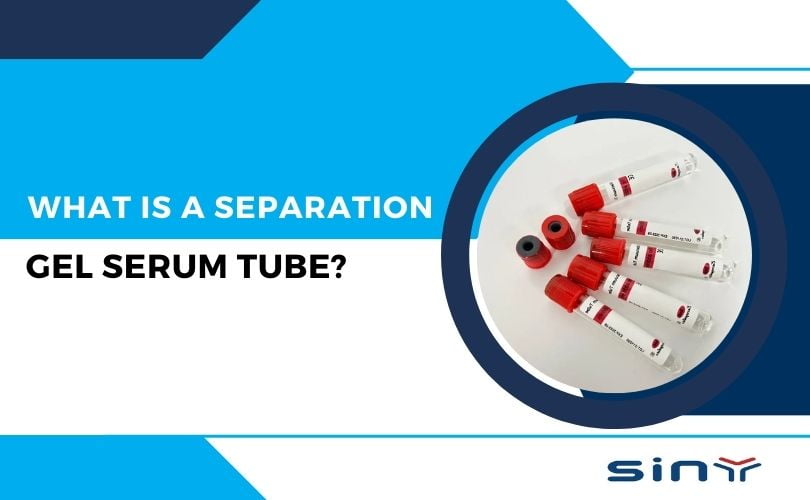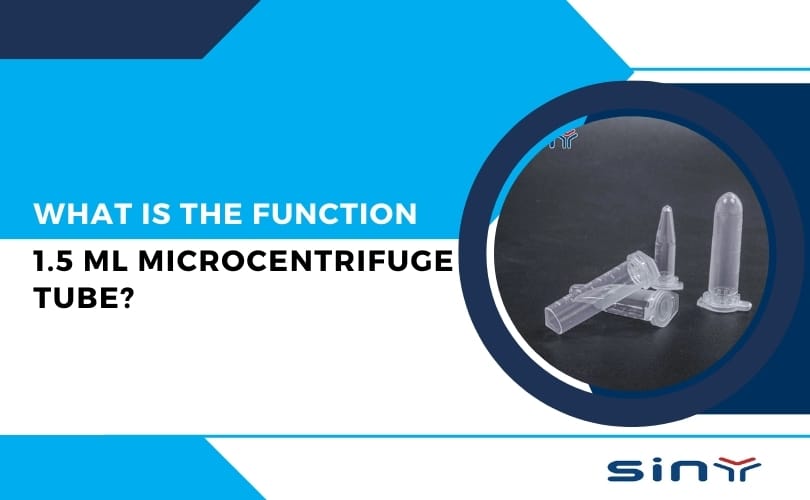Serum separation tubes, also known as gel clot activation tubes or SST blood collection tubes, are indispensable tools for medical and clinical chemistry tests that require serum. The SST tube, often called the ‘yellow top tube’ or ‘gold top tube’, contains particles that accelerate blood clotting and a special gel that separates blood cells from serum. This allows for clear serum to be extracted from the blood sample and used for testing by centrifugation.
Gel separation of serum tubes is generally used to detect indicators such as liver function, kidney function, and myocardial enzymes and can also be used to detect viral infections, tumor markers, etc.
Table of Contents
What is a Separation Gel Serum Tube?
Serum separator tubes (SSTs), commonly known as separation gel serum tubes, play a crucial role in clinical laboratories, where they widely collect serum samples. These tubes quickly and effectively separate serum blood collection tubes from blood cells, making them indispensable for a range of diagnostic tests.

How does the separation gel work?
The separation gel in serum separator tubes (SSTs) is crucial in effectively separating serum from blood cells during laboratory testing. Understanding the mechanism of this gel is essential for optimizing its use in clinical diagnostics.
- Clot Activation: When you draw blood into an SST, it contains micronized silica particles that act as clot activators. These particles initiate the coagulation process, allowing the blood to clot effectively.
- Centrifugation Process: After allowing the blood to clot for a specified period (typically 30 to 60 minutes), you centrifuge the tube. The centrifugal force causes the blood cells to settle at the bottom of the tube.
- Formation of the Gel Barrier: The separation gel, located at the bottom of the SST, has a unique density intermediate between that of serum and blood cells.
- Clear Separation: This gel barrier effectively prevents the mixing of serum with cellular components, reducing the risk of contamination. The result is a clear separation between the serum and the clot, allowing for easy serum extraction for testing.
Applications of Serum Separation Tubes
SSTs are versatile and widely used in clinical laboratories for various applications, including:
A serum-separator gel is a material that meets the requirement for quickly and simply collecting serum to conduct inspections more accurately and speedily under recent circumstances, in which the need for biochemical inspections is increasing among pathological inspections.

- These tests assess liver and kidney function, electrolyte levels, and other biochemical markers.
- You can use SSTs for therapeutic drug monitoring and hormone assays. However, exercise caution, as drugs or hormones might diffuse into the gel and potentially affect the accuracy of the results.
- Serum collected in SSTs detects viral infections and other pathogens
- SSTs actively assist in diagnosing and monitoring cancer by measuring tumor markers in oncology.
Conclusion
Separation gel serum tubes are invaluable tools in clinical diagnostics. They facilitate the efficient collection and separation of serum for a wide range of tests. Their design, which incorporates clot activators and a gel barrier, ensures accurate and reliable results, making them a critical component in modern laboratory practices. Understanding their proper use and handling is essential for healthcare professionals to optimize patient care and diagnostic accuracy. The gel appearance in SST tubes is thought to be less clear and have less effect on serum drug levels.
Drugs or hormones can diffuse from the serum into the gel and produce droplet levels at record levels, So you must handle serum separation tubes carefully when determining drug or hormone levels. The gel in SST tubes appears less clear and has a reduced effect on serum drug levels.
FAQs
How do SST tubes work?
After collecting blood in an SST tube, the clot activator quickly clots the blood. Centrifugation causes the separation gel to move, creating a barrier between the clotted blood cells and the serum. This process allows for easy extraction of clear, contaminant-free serum for testing.
What are the main components of a separation gel serum tube?
The main components of a separation gel serum tube include:
- Micronized Silica Particles: These act as clot activators to promote coagulation.
- Separation Gel: The gel forms a barrier between the serum and blood cells during centrifugation
What types of tests can be performed using serum collected from SSTs?
Serum collected in SSTs supports a variety of diagnostic tests, including:
- Liver and kidney function tests, along with other clinical chemistry tests.
- Hormone and drug-level testing
- Infectious disease testing
- Tumor marker detection



























































